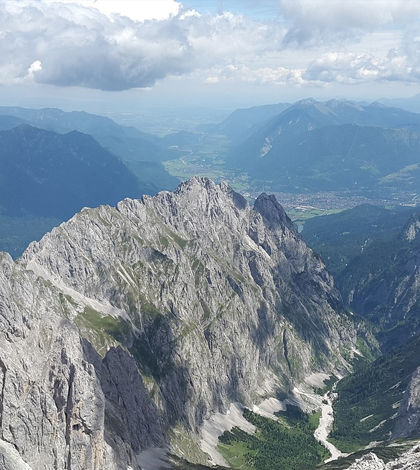Study: Climate Change Impacts Landscape Processes Behind Valley And Ridge Formation

Sometimes, natural landscapes appear so neat and orderly that they give the impression of being planned. A new study from the University of Oregon explores the landscape processes behind the formation of ridges and valleys, providing insight into how these natural landscapes develop distinct patterns.
The study’s findings were published online ahead of print in the journal Science.
“There are two competing processes that happen in landscapes,” said Kristin Sweeney, UO doctoral student and lead author of the study.
On one hand, erosion from rainwater runoff and other sources carves channels through a landscape. On the other, sediment movement caused by burrowing animals, falling trees and the like tends to smooth landscapes out.
These mechanisms, known as the channel process and the hill-slope process, respectively, are constantly at odds with one another, and Sweeney says they provide the key to understanding the depth and spacing of valleys and ridges.
In the lab, Sweeney and her co-authors conducted five 20-hour experiments using small sandboxes and artificially produced erosion processes. An array of 42 misting nozzles were used to simulate channeling rainfall, while larger “rainsplash” droppers were employed to produce hill-slope processes.

A combination of rainwater runoff and hill-slope erosion are responsible for valley and ridge formation in landscapes. (Credit: Joshua Roering)
The five experiments were designed to run the gamut of landscape formation scenarios, with one simulating only channel-forming rainfall, and another exclusively simulating hill-slope processes. The three remaining experiments used a combination of the processes to varying degrees.
“The most significant result from our experiment demonstrates that the efficiency of hill-slope processes changes a lot with the landscape,” Sweeney said, noting in particular the role of vegetation in preventing erosion from runoff.
“Vegetation changes considerably on 1,000-year timescales, and we expect to see those changes reflected in the landscape,” she said.
As climate change impacts the composition of vegetation growth throughout various environments, Sweeney said that some of those changes could be observed sooner rather than later.
Previous models that examined landscape geomorphology and its interaction with climate focused solely on channel-forming processes, Sweeney said. Others looked at topography in nature, where changes occur too slowly for scientists to accurately measure.
Her study was unique in its use of a real-time proxy for hill-slope transport. Finding that proxy, she said, was one of the hardest parts of the study, and took more than a year of trial and error.
“I tried to grow ice at first — that turned out to be really difficult and not very effective,” Sweeney said. “I think that’s pretty typical in experimental geomorphology: You try a bunch of different things to produce an analogue to the process you’re trying to evaluate, and a lot of those things don’t work.”
Going forward, Sweeney said she’s interested in exploring the effects of shifting rainfall patterns — another projected effect of climate change — on landscape formation.




0 comments